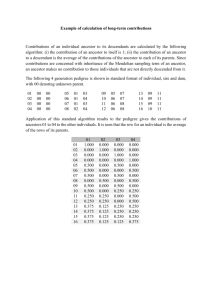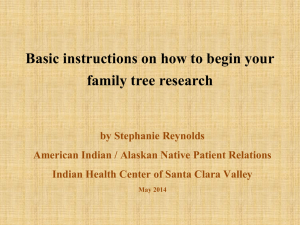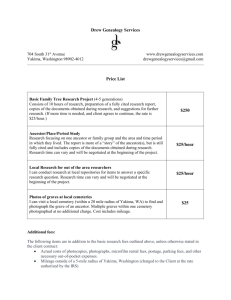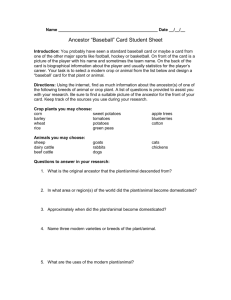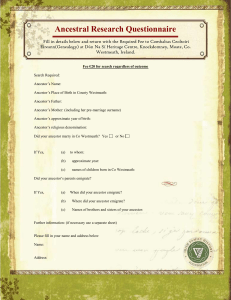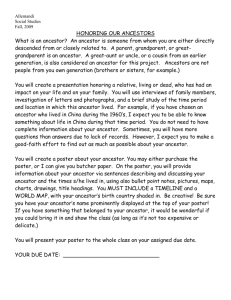file - Relative Bliss
advertisement
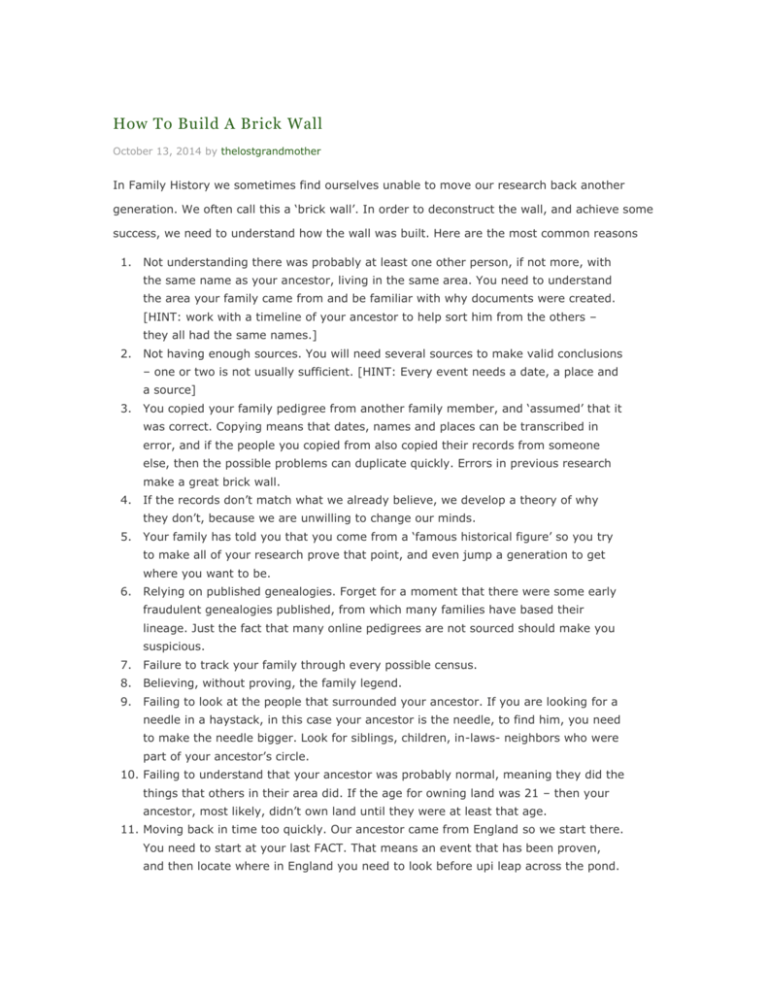
How To Build A Brick Wall October 13, 2014 by thelostgrandmother In Family History we sometimes find ourselves unable to move our research back another generation. We often call this a ‘brick wall’. In order to deconstruct the wall, and achieve some success, we need to understand how the wall was built. Here are the most common reasons 1. Not understanding there was probably at least one other person, if not more, with the same name as your ancestor, living in the same area. You need to understand the area your family came from and be familiar with why documents were created. [HINT: work with a timeline of your ancestor to help sort him from the others – they all had the same names.] 2. Not having enough sources. You will need several sources to make valid conclusions – one or two is not usually sufficient. [HINT: Every event needs a date, a place and a source] 3. You copied your family pedigree from another family member, and ‘assumed’ that it was correct. Copying means that dates, names and places can be transcribed in error, and if the people you copied from also copied their records from someone else, then the possible problems can duplicate quickly. Errors in previous research make a great brick wall. 4. If the records don’t match what we already believe, we develop a theory of why they don’t, because we are unwilling to change our minds. 5. Your family has told you that you come from a ‘famous historical figure’ so you try to make all of your research prove that point, and even jump a generation to get where you want to be. 6. Relying on published genealogies. Forget for a moment that there were some early fraudulent genealogies published, from which many families have based their lineage. Just the fact that many online pedigrees are not sourced should make you suspicious. 7. Failure to track your family through every possible census. 8. Believing, without proving, the family legend. 9. Failing to look at the people that surrounded your ancestor. If you are looking for a needle in a haystack, in this case your ancestor is the needle, to find him, you need to make the needle bigger. Look for siblings, children, in-laws- neighbors who were part of your ancestor’s circle. 10. Failing to understand that your ancestor was probably normal, meaning they did the things that others in their area did. If the age for owning land was 21 – then your ancestor, most likely, didn’t own land until they were at least that age. 11. Moving back in time too quickly. Our ancestor came from England so we start there. You need to start at your last FACT. That means an event that has been proven, and then locate where in England you need to look before upi leap across the pond. I could add other reasons, but these are the most common. Use a timeline, make sure what you are finding fits into that timeline, and evaluate carefully if you want more success in your searches. Oh- I almost forgot, and yes I know I say this all the time– keep a research log.

